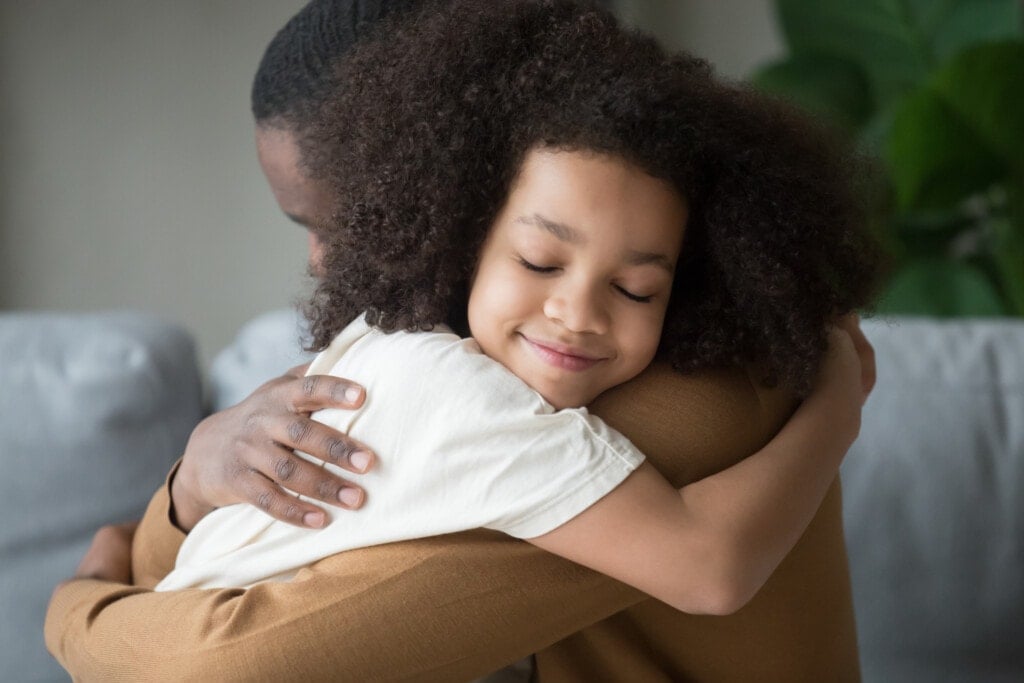Most parents want to raise children who are gracious and grateful for the gifts they receive from others. None of us want to have “that kid” who acts like an entitled brat or throws a fit when they don’t get the gift they want. Raising our children to have a gracious and grateful attitude can be challenging in a world that teaches our kids that complaining and always striving for “more” and “better” is the norm.
Many parents don’t realize that an “attitude of gratitude” is not an inherent trait in children. Being thankful is something that is taught regularly and preferably from a young age.9 But teaching children to be grateful is not as easy as it may seem. It takes time, effort, and a lot of patience on the part of the parents. And in most cases, it requires a family culture that cultivates a thankful heart.
The Benefits of a Grateful Attitude
Much research has been done to understand the relationship between gratitude and happiness, but most focus on adults. However, researchers have highlighted the link between gratitude and joy in young children in recent years.10 They have found that grateful children are, in a nutshell, better off in life.1
A 2019 study showed that gratitude is linked to happiness in children by age 5 and that this link may help them grow up to be happier people.1 In 2008, a study showed that grateful children are happier, more optimistic, and more satisfied with themselves and their friends, family, and community.2 A review of literature published in 2018 showed that grateful teens were more likely to use their strengths to support their community, were more engaged in their schoolwork and hobbies, and had better grades. They were also less envious, depressed, and materialistic.3
The benefits of gratitude even continue into adulthood. Studies show that adults who practice gratitude enjoy improved psychological well-being, have better health, sleep better, and live longer.4 Grateful adults are also happier in the present and more hopeful about their future.5
Ways To Encourage a Grateful Heart Every Day
There are many great reasons for a family to practice gratitude and instill it in their children from an early age. Here are some ways you can encourage a grateful attitude in your kids:
1. Model Gratitude
Grateful parents tend to raise grateful children.8 Kids watch and emulate what their parents do and how they act.11 So, if we want to raise grateful kids, we first must practice gratitude ourselves, and not just when we receive gifts.
This may look like saying “thank you” to everyone, from the checkout girl at the grocery store to the stranger who holds open the door of the coffee shop. This may also look like showing gratitude in all circumstances (even when it’s tough). For instance, instead of complaining about the gloomy weather, share how grateful you are for having an excuse to stay in and have a family movie day. Or, instead of grumbling about how much work you have, share how grateful you are for a job that helps the family afford what they need. Modeling a grateful attitude may be the most influential factor in instilling the same in your children.
2. Start a Gratitude Jar or Bulletin Board
Gratitude activities for kids, like creating a family gratitude jar or bulletin board is a tactile way to help your children learn how to express gratitude. Each family member can add things they’re grateful for throughout the week. At the end of the week, perhaps over a nice dinner, you can read the pieces of paper aloud to honor the good things happening in everyone’s lives.
3. Start a Gratitude Ritual
As a family, begin a daily gratitude ritual where you gather and share everything you’re grateful for. One common way to do this is around the dinner table. Also, many religious families start their evening prayer by giving thanks. If you do this with your family, perhaps give your children a chance to share what they are grateful for with their prayers. If you are a non-religious family, you can take turns sharing what you’re thankful for with each other. Or you can talk to your children at bedtime about gratefulness and have them share the blessings of that day. Whatever ritual you create, be sure to do it consistently.
4. Reflect on the Experience
Researchers at the Raising Grateful Children Project at UNC-Chapel Hill have discovered that gratitude is an experience that has four parts:6,7
- Noticing: What we see in our lives for which we can be grateful
- Thinking: Thinking about why we’ve been given those things
- Feeling: How we feel about the things we receive
- Doing: What we do to express appreciation for those things
The researchers found that a majority of parents focused on teaching their kids the “doing” part of gratefulness (“Say thank you!”), and few focused on asking their kids how the gift made them feel or how they felt about the person giving it.7 To help your kids develop a deeper sense of gratitude, engage them in all four gratitude components. Here are some questions to encourage children to be grateful for their gifts:
- NOTICE: What are you grateful for in your life? Are there nonmaterial gifts someone gave you that you’re grateful for? Are you grateful for any people in your life?
- THINK: What do you think about this gift? What do you think about the person who gave it to you? Why do you think you received the gift? Did you do something to earn it? Do you think they gave it to you because they had to or wanted to?
- FEEL: Does it make you feel happy to receive this gift? What about this gift makes you feel good?
- DO: Is there a way to show how you feel about this gift? Does this happiness make you want to share the feeling by giving someone else a gift?
How To Teach Your Kids To Be Grateful for Gifts
Teaching kids to have a grateful heart in all circumstances is the best way to instill that attitude of gratitude, which will benefit them for a lifetime. But there are also more practical and immediate things you can do to teach your kids to be grateful for the gifts they receive. Here are several ideas:
1. Make Them the Giver
Help your child love to give gifts by focusing on the art of giving. This could mean making presents for family members and friends, doing a community service project together, etc. Helping kids understand the value of giving will foster a spirit of gratitude when they’re on the receiving end of the gift-giving.
2. Focus on the Intention
When your child receives a gift, help them focus on what’s essential: the giver’s intention. The adage, “It’s the thought that counts,” rings true here. This is where asking the above NOTICE, THINK, and FEEL questions come into play. For instance, if your child has received a gift for their birthday, encourage them to focus on being grateful to the person who gave them the present.
3. Prepare Them To Show Thankfulness
Generally, you will have a good idea of when you’ll be in a situation where your child may receive a gift. Celebratory events like birthday dinners or parties and holidays like Christmas or Easter are prime examples. Before you engage in the event, prepare your child to remember to behave with a grateful attitude. Remind them to think about the gift-giver’s intention and show their thankfulness by saying thank you.
4. Have Them Say Thank You
Most parents generally focus on the DOING part of gratitude: saying thank you. And while this isn’t necessarily all that gratitude requires, it’s still essential. Teach your kids to look the giver in the eye and kindly tell them, “Thank you.” And to mean it! 😉
5. Write a Thank-You Note
Writing a thank-you note after receiving a gift seems to have become old-fashioned. But why should it be? Having your child write a thank-you note for each gift they receive will help them reflect on the experience of gratitude, and it will put a smile on the face of the gift-giver.
6. Immediately Correct Ungrateful Behavior
Despite your best efforts, children will react to gifts in ways you may not appreciate. They are, after all, still learning how to show gratitude. When your child complains about a present or acts indifferent or uninterested, quietly pull them aside and have a little chat. Remind them what it means to be grateful and how we are supposed to behave when someone gives us a gift. Acknowledge that they may not like the gift, but they must still show they’re grateful. And encourage them to correct their behavior by saying thank you.
7. Praise Them for Showing Gratefulness
When you notice your child showing gratefulness, shower them with praise! Whether you can tell they’re genuinely grateful or just being polite, let them know you noticed and are proud of them. For example, “I saw how excited you were about that new toy and how nicely you thanked your friend. That was a great job being grateful for your gift!” Or “I could tell you don’t like the sweater Grandma got you, but you did a good job showing gratitude and thanking her. I’m so proud of you!”
Teaching your kids to be grateful for the gifts they receive starts with teaching them how to approach life with gratitude. Modeling a grateful attitude, establishing family gratitude rituals, and encouraging your kids to reflect on their appreciation will go a long way in raising truly grateful kids. And it will hopefully foster their happiness and contentedness, continuing to serve them for the rest of their lives.































